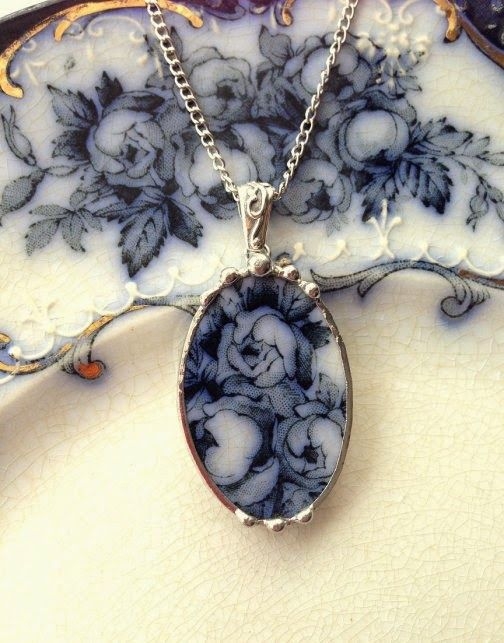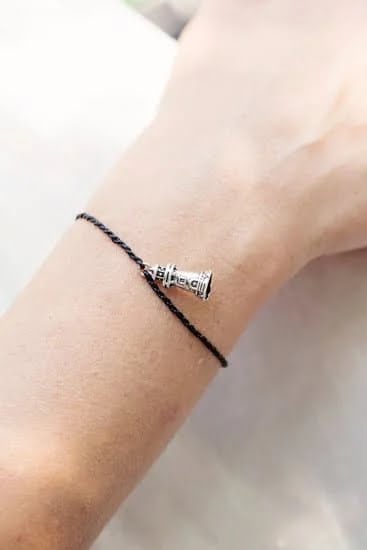Japanese history of jewelry dates back centuries and is rich with tradition, symbolism, and cultural significance. From ancient techniques to modern trends, the evolution of Japanese jewelry reflects the country’s vibrant heritage and artistic creativity. In this article, we will delve into the fascinating world of Japanese jewelry, exploring its ancient traditions, symbolism, famous designers, market trends, and its role in celebrations and ceremonies.
Ancient Japanese jewelry traditions have been passed down through generations, showcasing exquisite craftsmanship and intricate designs. The use of symbolism in Japanese jewelry is deeply rooted in cultural beliefs and traditions, adding layers of meaning and significance to each piece. As we take a closer look at the historical influences on Japanese jewelry, we will discover how cultural and historical events have shaped its evolution over time.
Furthermore, we will explore the modern Japanese jewelry industry and market, shedding light on contemporary trends in design and production. We will also highlight the important role that jewelry plays in Japanese celebrations and ceremonies, underscoring its enduring presence in the country’s customs and rituals. Join us as we uncover the captivating world of Japanese jewelry, from its ancient roots to its current status as a thriving art form.
Ancient Japanese Jewelry Traditions and Techniques
Introduction to Ancient Japanese Jewelry
The history of jewelry in Japan dates back to ancient times, with a rich tradition that has been passed down through generations. Ancient Japanese jewelry was deeply influenced by the country’s distinctive culture, values, and craftsmanship. From the Jomon period to the Edo period, jewelry played a significant role in Japanese society, symbolizing wealth, status, and spiritual beliefs.
Traditional Japanese Jewelry Techniques
The craftsmanship of ancient Japanese jewelry was highly regarded for its intricate designs and meticulous techniques. Metalworking, including goldsmithing and silversmithing, was among the primary techniques used to create stunning pieces of jewelry. Additionally, traditional crafts such as Mokume-gane (wood grain metal), Shakudo (alloy of gold and copper), and Tansu (inlay technique) were also utilized to craft unique and exquisite jewelry pieces.
Influences From Nature and Mythology
Ancient Japanese jewelry often drew inspiration from nature, featuring motifs such as cherry blossoms, chrysanthemums, and dragons. These natural elements were infused with deep symbolism derived from Shinto or Buddhist mythology. For example, the phoenix symbolized immortality while the dragon represented strength and good fortune. The use of these symbols in jewelry not only reflected cultural beliefs but also conveyed personal meaning for the wearers.
As we delve into the history of jewelry in Japan further, it becomes evident that the ancient traditions and techniques continue to greatly influence contemporary Japanese jewelry design and craftsmanship.
Symbolism and Meaning in Japanese Jewelry
Japanese jewelry has a rich history dating back centuries and is deeply rooted in the country’s culture and traditions. The symbolism and meaning behind Japanese jewelry hold significant importance, reflecting the values, beliefs, and customs of the Japanese people. Here are some key aspects of symbolism and meaning in Japanese jewelry:
- Emphasis on Nature: Traditional Japanese jewelry often incorporates natural elements such as flora and fauna, reflecting the deep reverence for nature in Japanese culture. Designs may feature motifs inspired by cherry blossoms, bamboo, or the iconic koi fish.
- Spiritual Significance: Many pieces of Japanese jewelry are imbued with spiritual symbolism derived from Shintoism, Buddhism, or other traditional belief systems. Symbols like the lotus flower, sacred animals, or mythical creatures are commonly used to convey spiritual meanings.
- Expressing Status and Identity: Jewelry in Japan has historically been used to signify social status, marital status, and identity within the community. For example, certain accessories were reserved for nobility or were worn as part of ceremonial attire during special occasions.
The intricate craftsmanship and attention to detail that characterize Japanese jewelry further underscore its symbolic significance. Whether it is a delicate kimono accessory or a stunning gemstone piece, each item carries layers of meaning that resonate with the wearers and admirers alike. As Japan’s history of jewelry continues to evolve alongside contemporary fashion trends and international influences, these symbolic elements remain integral to the artistry of Japanese jewelry.
In modern times, Japan’s unique approach to blending tradition with innovation has contributed to a diverse range of meaningful designs in the country’s thriving jewelry industry. From avant-garde interpretations of traditional symbols to innovative materials and techniques, Japanese jewelry reflects a profound connection between past heritage and present creativity. As the global interest in Japanese culture grows, so does the appreciation for the symbolism and meaning embedded within its distinctive jewelry tradition.
Evolution of Japanese Jewelry Trends
The evolution of Japanese jewelry trends has been influenced by a mix of tradition, innovation, and cultural shifts. Throughout history, the Japanese have demonstrated a deep appreciation for beauty and craftsmanship, which is reflected in their approach to jewelry making.
From traditional techniques to modern influences, the evolution of Japanese jewelry trends is a fascinating journey that showcases the country’s unique blend of artistry and cultural heritage. Here are some key points that highlight the evolution of Japanese jewelry trends:
- Traditional Craftsmanship: Ancient Japanese jewelry traditions and techniques have laid the foundation for the country’s rich legacy in jewelry making. Techniques such as Mokume-gane (wood grain metal), Shakudo (a blended metal alloy), and Urushi lacquer have been used for centuries to create intricate and exquisite pieces.
- Fusion of East and West: Over time, Japan has been exposed to various external influences, including Western styles and design principles. This fusion has inspired contemporary Japanese jewelers to experiment with new materials, shapes, and designs while still embracing their cultural roots.
- Embracing Minimalism: In recent years, there has been a shift towards minimalist and understated designs in Japanese jewelry. This aesthetic aligns with the traditional Wabi-Sabi philosophy, which appreciates imperfection and impermanence. The emphasis on simplicity and natural beauty has become a hallmark of modern Japanese jewelry trends.
As Japan continues to honor its history while embracing innovation, its jewelry industry remains an intriguing reflection of the country’s evolving artistic vision. The interplay between tradition and contemporary influences continues to shape Japan’s unique presence in the global jewelry market.
Influence of Cultural and Historical Events on Japanese Jewelry
Cultural and Historical Influence
Throughout the centuries, Japan’s rich history and culture have significantly influenced the design and style of jewelry in the country. From the early Jomon period to the modern era, various cultural and historical events have shaped the evolution of Japanese jewelry. For example, during the Edo period, strict sumptuary laws restricted the use of precious metals, leading to an emphasis on intricate metalworking and lacquer techniques in jewelry design.
Impact of Foreign Influences
The opening of Japan to foreign trade in the late 19th century had a profound impact on Japanese jewelry. The introduction of Western styles and techniques led to a fusion of traditional Japanese aesthetics with modern designs. This period marked a significant shift in Japanese jewelry trends, as craftsmen incorporated new materials and gemstones into their creations.
World War II and Reconstruction
The aftermath of World War II brought about drastic changes in Japan, including its jewelry industry. The scarcity of resources during the post-war reconstruction period led to an increased focus on using alternative materials such as ceramics and plastics in jewelry making. Additionally, this era saw a resurgence of traditional craftsmanship as artisans sought to preserve Japan’s cultural heritage through their creations.
Japan’s history is intricately woven into the fabric of its jewelry traditions, with each cultural and historical event leaving an indelible mark on the artistry and style of Japanese adornments. As a result, the influence of these events continues to shape contemporary Japanese jewelry design and production.
Famous Japanese Jewelry Designers and Their Contributions
The history of jewelry in Japan dates back centuries, and the country has produced numerous talented designers who have made significant contributions to the global jewelry industry. One such renowned designer is Goto Mitsuyoshi, known for his intricate metalwork and innovative designs.
Mitsuyoshi’s creations often feature motifs inspired by traditional Japanese culture, such as cherry blossoms, dragons, and samurai symbols. His work has been celebrated both in Japan and internationally, earning him a reputation as one of the most influential Japanese jewelry designers.
Another prominent figure in the world of Japanese jewelry is Kazuo Kawai, whose avant-garde approach to design has garnered widespread acclaim. Kawai’s bold use of unconventional materials and experimental techniques has set him apart from his contemporaries. His boundary-pushing style has made a lasting impact on the modern Japanese jewelry scene, inspiring emerging designers to embrace innovation and creativity.
In addition to individual designers, there are also notable Japanese jewelry houses that have shaped the industry. One such example is Hattori Jewels, a family-owned company with a rich heritage spanning over a century. Known for its exquisite craftsmanship and timeless elegance, Hattori Jewels has played a pivotal role in preserving traditional Japanese jewelry techniques while adapting to contemporary trends.
These visionary designers and esteemed jewelry houses have not only elevated the status of Japanese jewelry on the global stage but have also contributed to the preservation of traditional artistry for future generations to appreciate.
| Designer | Contribution |
|---|---|
| Goto Mitsuyoshi | Innovative designs inspired by traditional Japanese culture |
| Kazuo Kawai | Avant-garde approach and use of unconventional materials |
| Hattori Jewels | Preservation of traditional Japanese jewelry techniques while adapting to contemporary trends. |
Modern Japanese Jewelry Industry and Market
The modern Japanese jewelry industry and market is a thriving and dynamic sector that reflects the country’s rich cultural heritage and cutting-edge design innovations. With a history dating back thousands of years, Japan’s influence on the global jewelry market cannot be underestimated. Today, Japan is renowned for its high-quality craftsmanship, innovative designs, and use of both traditional and contemporary materials.
In recent years, the Japanese jewelry industry has experienced significant growth, with an increasing number of designers and brands gaining international recognition. According to industry reports, the domestic demand for jewelry in Japan has been steadily rising, driven by consumer preferences for unique and personalized pieces. The country’s jewelry market encompasses a wide range of products, including fine jewelry, fashion jewelry, and accessories crafted from precious metals, gemstones, pearls, and alternative materials.
Furthermore, Japan’s reputation for meticulous attention to detail and emphasis on quality control has contributed to its success in the global jewelry market. Japanese jewelers are admired for their precision in setting stones, intricate metalwork techniques such as mokume-gane (wood grain metal), as well as the use of traditional Japanese motifs in their creations. This dedication to craftsmanship has positioned Japan as a leading player in the luxury jewelry segment.
One notable trend within the modern Japanese jewelry industry is the growing interest in sustainable and ethically sourced materials. Consumers are increasingly seeking environmentally conscious options when purchasing jewelry, prompting designers and manufacturers in Japan to explore eco-friendly alternatives and adopt responsible production practices to meet evolving consumer demands.
| Japanese Jewelry Industry | Market Trends |
|---|---|
| High-quality craftsmanship | Rising domestic demand |
| Meticulous attention to detail | Growing interest in sustainability |
| Diverse range of products | Emphasis on quality control |
The Role of Jewelry in Japanese Celebrations and Ceremonies
Jewelry has always played a significant role in Japanese celebrations and ceremonies, serving as an important cultural and social symbol. From traditional weddings to festivals and religious rituals, the use of jewelry in these events reflects the rich heritage and traditions of Japan.
In ancient Japan, jewelry held great importance in religious ceremonies and was often used as offerings to Shinto gods and Buddhist deities. Beads made of jade, agate, amber, and other precious materials were used to adorn ceremonial costumes and accessories, signifying spiritual significance and divine connection. These intricate pieces of jewelry were meticulously crafted using traditional techniques that have been passed down through generations.
One significant event where jewelry plays a pivotal role is during traditional Japanese weddings. The bride’s ensemble is often adorned with elaborate hair ornaments, earrings, and necklaces that hold deep cultural symbolism. For example, the use of “tsunokakushi” headpieces represents modesty and obedience, while “hiki” (pendant) symbolizes eternal love and commitment. The groom also wears accessories such as cufflinks or tie pins that hold symbolic meanings of his role as a husband.
In modern times, the role of jewelry in Japanese celebrations continues to evolve while maintaining its cultural significance. While traditional customs are still upheld, there is also a fusion of contemporary designs that cater to modern tastes and trends. However, the underlying symbolism and meaning behind these pieces remain deeply rooted in Japan’s history of jewelry craftsmanship.
Preservation and Promotion of Traditional Japanese Jewelry Artistry
In conclusion, the history of jewelry in Japan is rich and diverse, reflecting the country’s unique culture and traditions. From ancient techniques to modern trends, Japanese jewelry has evolved while still preserving its traditional artistry. The significance of jewelry in Japanese celebrations and ceremonies cannot be understated, as it continues to play a pivotal role in various aspects of Japanese life.
The preservation and promotion of traditional Japanese jewelry artistry are vital in ensuring that these time-honored techniques and designs continue to thrive. Efforts to safeguard the knowledge and skills related to ancient Japanese jewelry traditions are crucial for passing on this cultural heritage to future generations. Furthermore, promoting these art forms globally helps showcase Japan’s artistic prowess and perpetuates its legacy in the world of jewelry.
As we look toward the future, it is imperative to recognize the contributions of famous Japanese jewelry designers who have propelled the industry onto the global stage. Their creative innovations have not only upheld tradition but also pushed boundaries, creating a dynamic landscape for Japanese jewelry. By embracing both old and new influences, Japan’s history of jewelry remains an inherent part of its cultural identity, shaping its narrative for years to come.
Frequently Asked Questions
What Is Japan Known for in Jewelry?
Japan is known for its exquisite craftsmanship and attention to detail in jewelry making. Traditional Japanese jewelry often features intricate designs, fine metals like gold and silver, and precious gemstones such as jade, pearls, and coral.
What Is the Oldest Japanese Jewelry?
The oldest Japanese jewelry dates back to the Jomon period, which lasted from around 14,000 BC to 300 BC. During this time, the people of Japan created beautiful jewelry using natural materials like shells, bones, and stones. These early pieces reflected the aesthetic of the time and were often used as decorative adornments.
How Old Is Jewelry Marked Japan?
Jewelry marked with “Japan” typically indicates that it was made during the Meiji period (1868-1912) or later when Japan opened up to international trade and began producing jewelry for export. This mark can be found on a variety of items including bracelets, brooches, and necklaces that were crafted using both traditional Japanese techniques and Western influences.

Welcome to my jewelry blog! My name is Sarah and I am the owner of this blog.
I love making jewelry and sharing my creations with others.
So whether you’re someone who loves wearing jewelry yourself or simply enjoys learning about it, be sure to check out my blog for insightful posts on everything related to this exciting topic!





